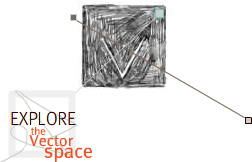The RED Project
Rendering Electromagnetic Distributions
Design Team Statement
Two years ago, Erik Loyer wrote in Vectors (1:2) that "we simply have not yet developed a popular visual vocabulary to adequately describe wireless connectivity--at least not in a way that would shed any light on people's behavior while using these networks." The RED Project may not be much closer to that goal, but the practical need for a better way to visualize and reason about wireless is now more apparent than ever.
Why did we choose to map wireless? Mapping is a useful tool because it allows us to think about difference across geography. Maps tell us where things are in the world and what to expect. By doing so, they shape our ideas about places and facilitate movement in unvisited landscapes. In the history of wireless communication, it is rare to find granular maps like these. Usually all of the United States is assumed to communicate the same way, or a crude distinction like "urban" vs. "rural" is the only kind made.
This project is also an attempt to intervene in an area of communication policy that could be considered arcane. To counter this perception, we wanted to link our visualizations of invisible waves with more familiar photographic and geographic representations of specific places and people. After some initial experiments with proprietary and custom map interfaces (such as UMN Mapserver and ArcIMS), we instead decided to implement our mapserver as a software mashup. We mashed Yahoo! Maps, our own statistics and data from the US Census to create a medium where spectrum novices could explore familiar geographical places and visualize the invisible phenomenon of Wi-Fi.
After experimenting with a variety of tints, we chose the color red because it was the easiest to distinguish in our overlay of Yahoo! Maps. We later justified our choice by making up an acronym and a few other rationales (for instance, "red" means "network" in Spanish). The most significant rationale is probably that red fits the current conceptual model of spectrum use held by those in charge of regulating the airwaves. While one might habitually think of more communication as a good thing, in spectrum planning wireless transmissions are often rendered with the color red to indicate that the available capacity of part of the spectrum has been used. (Unused spectrum or available capacity is called "white space.") Red spectrum thus means "stop!" in part because of fears of congestion failure, the condition where too many devices try to transmit and no communication is possible due to interference.



